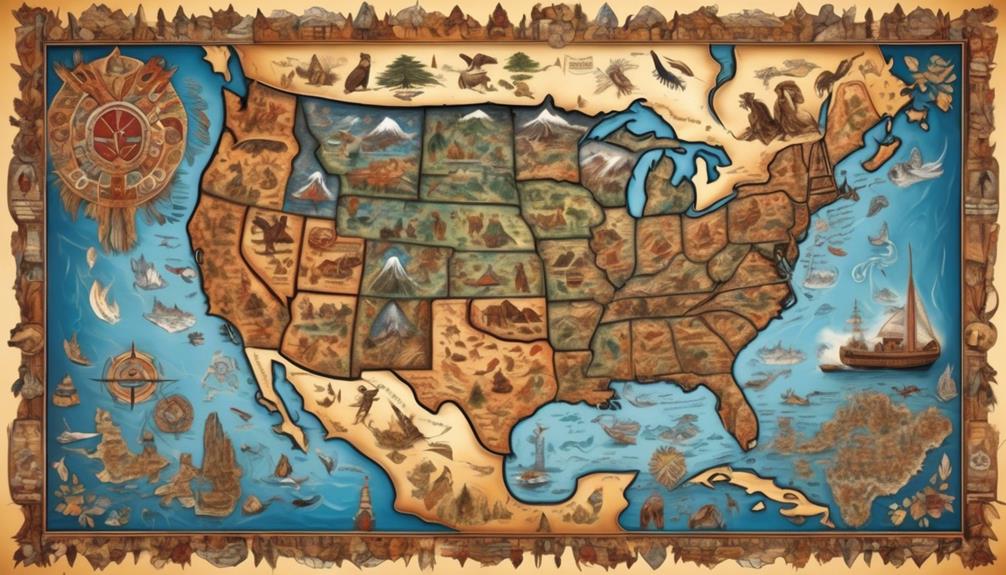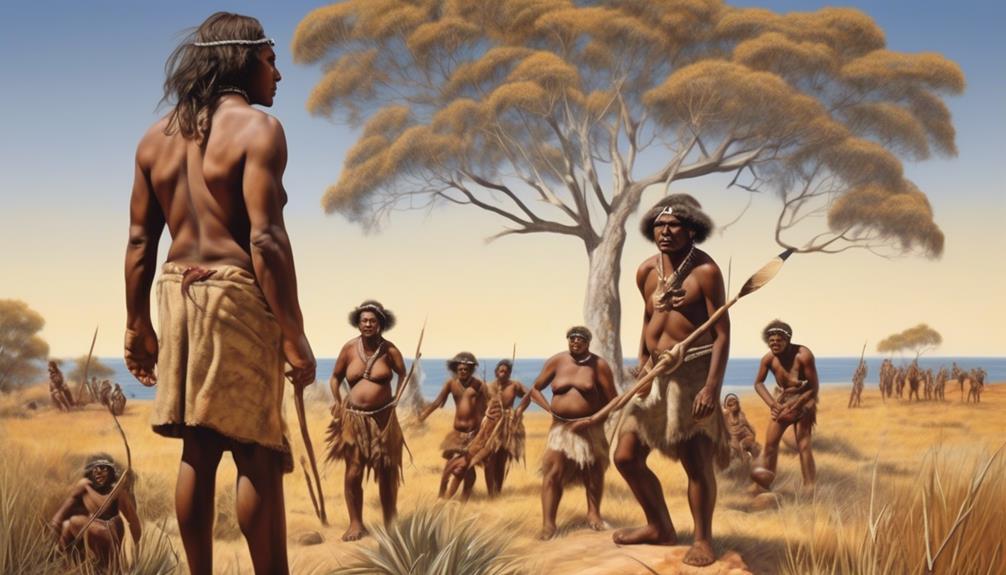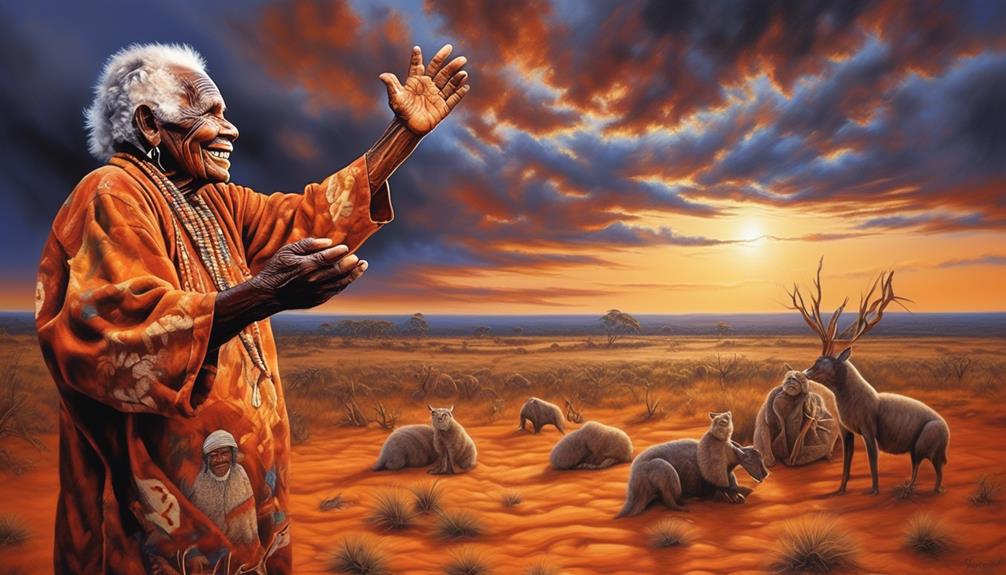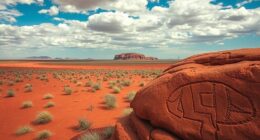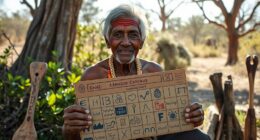It’s often said that a picture speaks volumes, and in the realm of Aboriginal cinema, the narratives shared through film are indeed invaluable.
From the heart-wrenching journey of three young girls in 'Rabbit-Proof Fence' to the raw and unfiltered portrayal of love and struggle in 'Samson & Delilah,' the world of Aboriginal movies offers a rich tapestry of culture, history, and human experience.
But what makes these films stand out? What do they offer that sets them apart from other cinematic experiences?
Key Takeaways
- Portrayal of Indigenous resilience and determination is a common theme in Aboriginal movies, with films like Rabbit-Proof Fence, Samson & Delilah, Sweet Country, and Ten Canoes showcasing the strength and determination of Aboriginal characters.
- The impact of colonial policies and historical mistreatment on Indigenous communities is explored in movies like Rabbit-Proof Fence, Samson & Delilah, The Sapphires, and Sweet Country, shedding light on the challenges faced by Aboriginal people throughout history.
- Aboriginal movies often emphasize cultural expression and identity, with films like Rabbit-Proof Fence, The Sapphires, Sweet Country, and Ten Canoes showcasing the importance of preserving traditions and highlighting the rich cultural heritage of Aboriginal communities.
- Aboriginal movies also serve as powerful societal commentaries, addressing systemic issues and prompting reflection on ongoing challenges faced by Aboriginal people. Films like Samson & Delilah, The Sapphires, and Sweet Country shed light on the struggles and experiences of Aboriginal individuals in the face of social and political change.
Rabbit-Proof Fence
Rabbit-Proof Fence offers a compelling portrayal of the resilience and determination of three young Aboriginal girls as they undertake a courageous journey to find their way back home. The film delves into the heart-wrenching impact of colonial policies on Indigenous communities, highlighting the strength and cultural resilience of the Aboriginal people in the face of adversity. The movie powerfully illustrates the colonial impact on Aboriginal families and communities, emphasizing the devastating consequences of government-enforced assimilation and separation.
Through the girls' journey, the audience gains insight into the traditional storytelling and survival skills passed down through generations, showcasing the deep connection to their land and heritage.
Furthermore, Rabbit-Proof Fence effectively captures the modern adaptation of traditional Indigenous ways of navigating and communicating through the harsh Australian terrain, demonstrating the girls' remarkable resourcefulness and knowledge of their ancestral practices. The film provides a poignant commentary on the enduring spirit of the Aboriginal people, shedding light on their unwavering determination to preserve their culture and reunite with their families despite the immense challenges imposed upon them.
Rabbit-Proof Fence stands as a poignant tribute to the resilience and strength of the Aboriginal community, offering a powerful cinematic portrayal of their enduring spirit.
Samson & Delilah
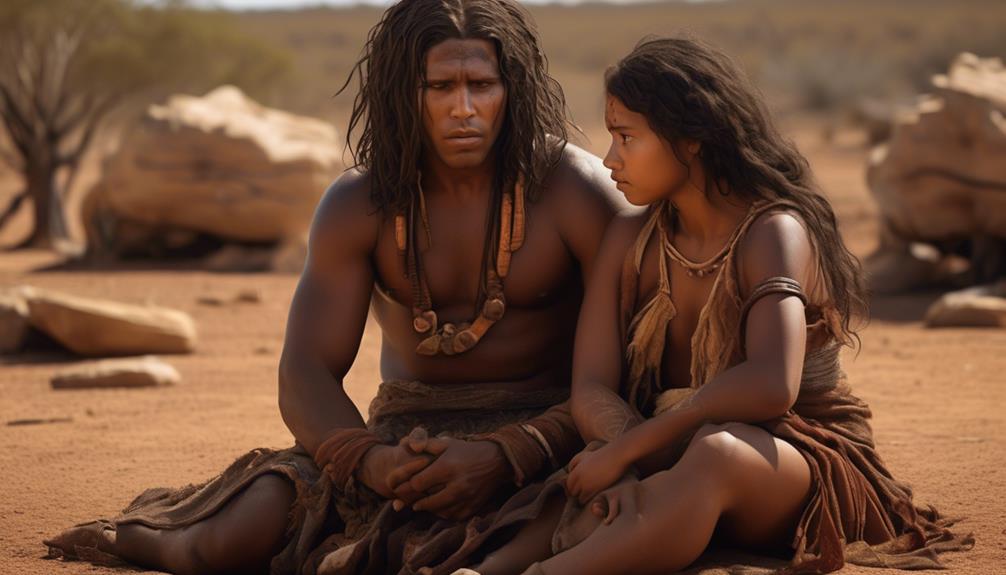
After exploring the resilience and determination showcased in Rabbit-Proof Fence, the narrative now shifts to the impactful portrayal of Indigenous experiences in the film 'Samson & Delilah'. This film delves into the harsh realities faced by Aboriginal communities, offering a poignant reflection on the societal issues and cultural impact of these experiences.
- Cultural Impact: 'Samson & Delilah' offers a raw and unfiltered view of the challenges faced by Indigenous communities, shedding light on the cultural impact of displacement and marginalization.
- Societal Commentary: The film serves as a powerful societal commentary, highlighting the systemic issues that perpetuate the cycle of poverty and substance abuse within Indigenous communities.
- Character Development: Through subtle nuances and powerful non-verbal communication, the characters of Samson and Delilah undergo profound transformation, portraying resilience and hope amidst adversity.
- Storytelling Techniques: The film's storytelling techniques, such as minimal dialogue and evocative cinematography, evoke a strong emotional response, effectively capturing the audience's attention.
- Realism and Authenticity: 'Samson & Delilah' authentically captures the daily struggles of Indigenous youth, offering a realistic portrayal that resonates on a deeply human level.
The Sapphires
Set against the backdrop of the tumultuous 1960s, 'The Sapphires' intricately weaves together elements of music, culture, and resilience, offering a compelling portrayal of the journey of four Indigenous women navigating the complexities of love, sisterhood, and their aspirations for success in the face of adversity.
The film brilliantly captures the essence of cultural representation, showcasing the Aboriginal culture through the mesmerizing performances of soul music by the talented protagonists. Their music and performances not only entertain but also serve as a powerful vehicle for expressing their cultural identity and heritage, resonating deeply with audiences and highlighting the richness of Indigenous artistic expression.
Moreover, 'The Sapphires' provides a poignant exploration of the historical context, shedding light on the impact of colonization and assimilation policies on Indigenous communities. It delves into the challenges faced by Aboriginal people during a time of significant social and political change, offering a thought-provoking narrative that invites contemplation about the resilience and strength of Indigenous individuals.
The film serves as a testament to the enduring spirit of Indigenous communities and their ability to overcome adversity through unity, talent, and unwavering determination.
Sweet Country
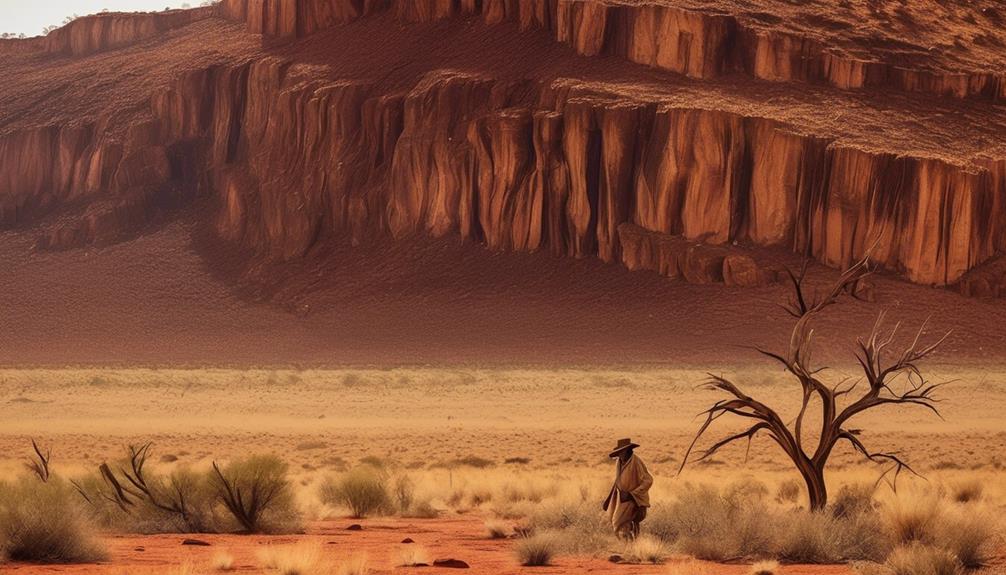
'Sweet Country' continues the exploration of Indigenous experiences, offering a compelling narrative set against the backdrop of the Australian outback. This film delves deep into the complexities of Indigenous culture and their representation in film, shedding light on historical injustices and the resilience of Aboriginal communities.
Here are some key aspects to consider:
- Authentic Portrayal: The film presents a realistic portrayal of Indigenous characters, showcasing their strength, struggles, and resilience in the face of adversity.
- Historical Context: 'Sweet Country' skillfully weaves a narrative that reflects the historical mistreatment of Indigenous Australians, bringing attention to the impact of colonization and systemic racism.
- Cultural Significance: Through its storytelling, the movie highlights the rich cultural heritage of Indigenous communities, emphasizing the importance of preserving traditions and ancestral connections.
- Cinematic Excellence: The cinematography and direction capture the vastness and beauty of the Australian outback, providing a visually stunning backdrop for the narrative.
- Impactful Storytelling: The film offers a thought-provoking exploration of indigenous culture, prompting audiences to reflect on the ongoing challenges faced by Aboriginal people and the importance of authentic representation in film.
'Sweet Country' stands as a powerful testament to the significance of Indigenous representation in cinema, offering a poignant and evocative portrayal of Aboriginal experiences.
Ten Canoes
Exploring the rich cultural traditions of Indigenous Australian communities, 'Ten Canoes' offers a compelling and immersive portrayal of ancestral storytelling and intergenerational wisdom. The film provides a captivating exploration of indigenous culture through its depiction of the traditional customs and beliefs of the Yolngu people, showcasing the importance of kinship, storytelling, and the connection to the land.
'Ten Canoes' is widely acclaimed for its historical accuracy and attention to detail in portraying the pre-colonial Aboriginal life, presenting a genuine and respectful representation of the Indigenous way of life.
The film's portrayal of traditional customs and beliefs is incredibly insightful, offering a rare glimpse into the rich cultural heritage of the Aboriginal communities. It captures the essence of traditional storytelling, visually narrating myths and legends that have been passed down through generations.
The movie's impact on modern Aboriginal communities is profound, as it serves as a source of pride, cultural preservation, and a reminder of the resilience and strength of Indigenous peoples. 'Ten Canoes' stands as a testament to the enduring legacy of Aboriginal traditions and their significance in contemporary society.
Frequently Asked Questions
What Are the Historical and Cultural Significance of the Rabbit-Proof Fence in Aboriginal History?
The rabbit-proof fence is of immense historical significance in Aboriginal history. It symbolizes the resilience and determination of the Indigenous people in the face of oppression.
Its cultural significance lies in its portrayal of traditional connections to the land and the enduring strength of Aboriginal culture.
This landmark in Australian history shines a light on the injustices faced by Indigenous communities. It serves as a powerful testament to their enduring spirit.
How Did the Filmmakers of Samson & Delilah Ensure Authentic Representation of Aboriginal Culture and Experiences?
In Samson & Delilah, the filmmakers ensured authentic Aboriginal representation through immersive filmmaking techniques. They used indigenous language and collaborated closely with Aboriginal communities, capturing real experiences and culture.
This authenticity shines through the film, creating a powerful and genuine portrayal. It's a testament to the dedication of the filmmakers and their commitment to honoring Aboriginal culture in a respectful and accurate manner.
What Impact Did the Sapphires Have on the Representation of Aboriginal People in the Australian Film Industry?
The impact of 'The Sapphires' on the representation of Aboriginal people in the Australian film industry was significant. The film highlighted the talent and resilience of Aboriginal individuals, challenging stereotypes. Its success opened doors for more diverse storytelling and increased recognition of Aboriginal culture.
Through authentic representation and storytelling, 'The Sapphires' contributed to a shift in the industry's approach to portraying Aboriginal perspectives, incorporating cultural elements and promoting inclusivity.
How Does Sweet Country Address the Themes of Colonialism and Racism in the Context of Aboriginal Experiences?
Sweet Country addresses the themes of colonialism and racism through a poignant portrayal of Aboriginal experiences. The film masterfully navigates the complexities of power dynamics and systemic oppression, shedding light on the harsh realities faced by indigenous communities.
What Unique Storytelling Techniques or Cultural Elements Are Used in Ten Canoes to Convey the Aboriginal Perspective?
In 'Ten Canoes,' unique storytelling techniques and cultural elements are used to convey the Aboriginal perspective. The film incorporates traditional storytelling methods, immersing viewers in indigenous representation through its cinematic portrayal.
With a focus on cultural authenticity, 'Ten Canoes' offers a rich and insightful look at Aboriginal traditions and perspectives. Its use of storytelling and cultural elements provides a nuanced and immersive experience, offering a profound insight into the Aboriginal perspective.
Conclusion
In conclusion, these top Aboriginal movies provide a powerful and insightful look into the rich culture and history of Indigenous Australians.
Just like the rabbit-proof fence symbolizes resilience and determination, these films serve as a poignant reminder of the strength and resilience of the Aboriginal people.
From the harsh realities depicted in 'Samson & Delilah' to the inspiring story of 'The Sapphires,' these movies paint a vivid and unforgettable picture of the Indigenous experience.
Talise is a talented writer and an expert in her field. Her unique perspective and insights enrich our content with depth and authenticity. With a wealth of knowledge and a strong connection to the subjects she writes about, Talise crafts engaging and informative articles that resonate with our readers. Her dedication to bringing Indigenous culture and wisdom to light is truly commendable.

